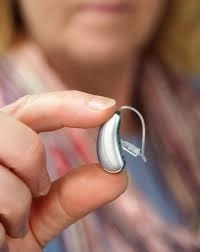
How Are Hearing Aids Programmed for Each Patient?
Published on: 2025-06-23 | Written by: Dr. Fatima Rajab, PhD in Audiology
Dr. Fatma Ragab, Specialist in the Diagnosis and Treatment of Hearing and Balance Disorders, emphasizes that the success of hearing aid use doesn’t depend solely on the device itself, but greatly on how precisely it is programmed to suit each patient’s specific needs. Accurate programming ensures clearer sounds, reduced background noise, and improved daily communication.
In this article, we’ll explain how hearing aids are programmed, why this process is personalized, and the steps Dr. Fatma Ragab follows to achieve the best hearing outcome for each case.
Why Must Hearing Aids Be Individually Programmed?
Every patient has a unique hearing profile. Some suffer from high-frequency hearing loss, while others have moderate-to-severe bilateral loss.
Dr. Fatma Ragab explains that programming takes into account:
-
The degree of hearing loss based on the audiogram
-
The affected frequency ranges (high – mid – low)
-
The patient’s lifestyle (quiet environments – noisy workplaces – phone calls)
-
Age and technological adaptability
Step-by-Step: How Is a Hearing Aid Programmed?
-
Precise Hearing Assessment
The process begins with an Audiometry test to define the type and severity of hearing loss. -
Choosing the Right Hearing Aid
Based on the results, the appropriate model is selected (behind-the-ear, in-the-ear, digital, or smart). -
Connecting the Hearing Aid to a Computer
Dr. Fatma Ragab explains that modern hearing aids are programmed via specialized software that allows fine adjustments to frequencies and volume levels. -
Adjusting Frequency Bands Individually
Each frequency is tuned to the patient’s needs (e.g., boosting high frequencies only if needed). -
Testing with the Patient
The patient tries the hearing aid during the clinic visit and is given time to adapt. -
Ongoing Follow-up and Adjustments
After using the device for a period, settings are reviewed and fine-tuned based on the patient’s feedback.
Can Hearing Aids Be Reprogrammed Later?
Yes. Dr. Fatma Ragab routinely reassesses programming, especially if the patient’s hearing changes or they encounter new listening environments, ensuring continued performance.
What If the Hearing Aid Feels Uncomfortable?
-
It may only require minor reprogramming rather than a full replacement.
-
In some cases, features like noise filters or directional microphones are added for better sound clarity.
Dr. Fatma Ragab stresses the importance of consistent communication with your audiologist to ensure the best experience with your device.
Conclusion
Hearing aid programming is not just a technical step—it’s an art that involves understanding the patient’s hearing loss and daily lifestyle. With Dr. Fatma Ragab’s expertise in audiology, each patient receives customized settings that ensure maximum sound clarity and comfort in every situation.

